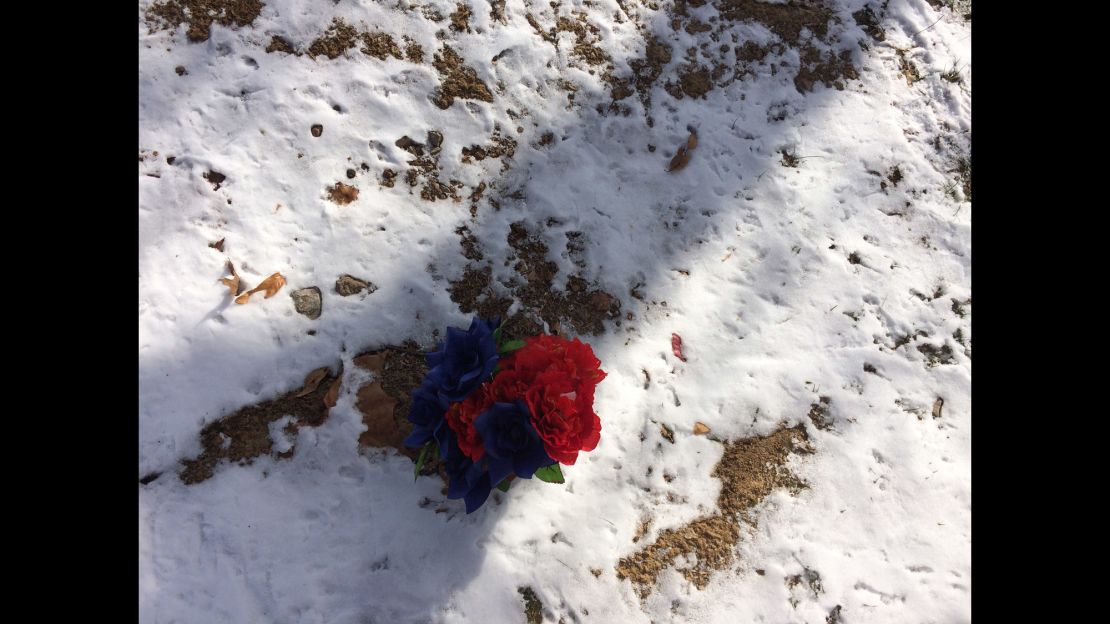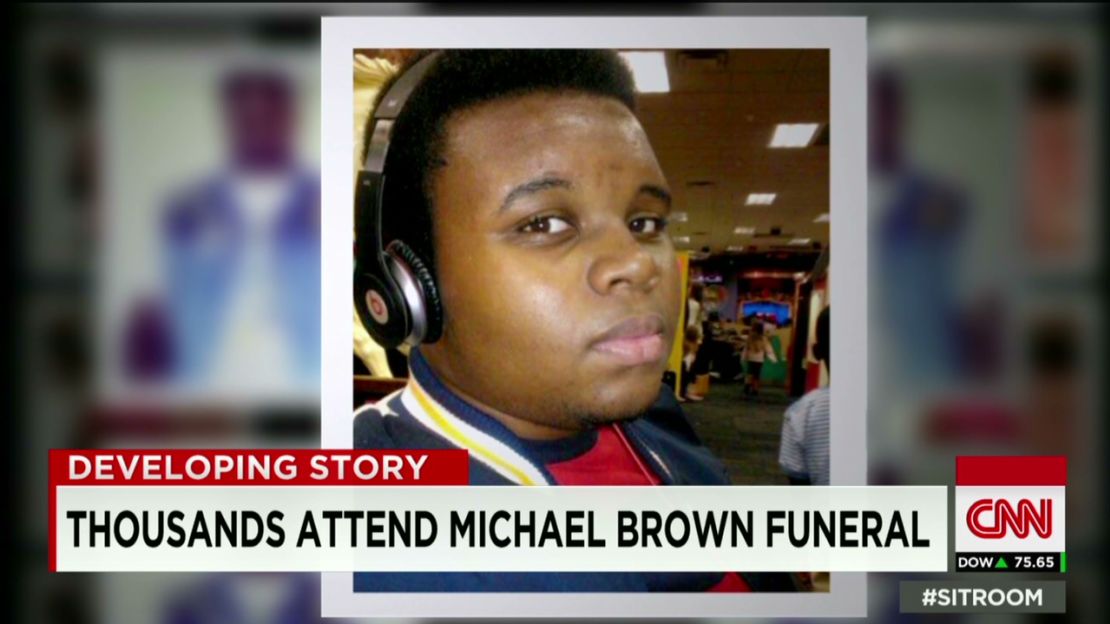Story highlights
Nearly three months have passed since Michael Brown was laid to rest
Fliers help visitors navigate the cemetery, where headstones are indistinct
Those making the pilgrimage to his grave site do so for a variety of reasons
Brown's death in Ferguson sparked a new conversation about an age-old problem
The 119 acres of St. Peter’s Cemetery lie blanketed by the season’s first snowfall. A hush fills the air; the only sound is the wind blowing accumulated snow, like confectioners’ sugar, off the branches of nearly bare trees.
I enter through the gate on Lucas and Hunt Road, thinking back to a decidedly different day in late August. The sun was bright and hot for late summer. The verdant oaks and elms soared to the sky.
I have written down the grave I am seeking: Section 10, Block F, Lot 12, Grave 4.
Inside the cemetery office, I inquire how to find this particular grave in this vast space. An employee looks at the number scribbled in my reporter’s notebook.
“Oh.”

I look at him, not knowing at first what to make of his reaction.
From behind the counter, he whips out a photocopied flier.
“You’re looking for Michael Brown, right?”
I nod, yes, and glance at the flier. It’s a cemetery map. I see Brown’s name and a hand-drawn line pointing to the lot where he is buried. The fliers became necessary because so many visitors asked the same question I did.
Several have already been here today, says the man behind the counter. Even in this cold.
I head down St. Peter’s Drive to the intersection of Hickory, just as the man instructed. I see why a marked map is necessary. There are rows and rows of graves. The sections are not marked, and the headstones are low and not that distinctive.
I am searching for something that says his name: Michael Brown. Such a common name, I think. How many Michael Browns do I know? At least six that I can recall in an instant.
But I cannot find him. I study the flier, fluttering in the frigid wind, and discern that he is somewhere between others whose names are marked on the map. Bradley. Wilder. Hamilton.
Then, I see the footprints, fresh on the snow. The rest of the field is pristine, but there has been a flurry of foot traffic here. I follow the footprints to a small bouquet of plastic flowers, red and purple, planted in the ground.
There is not yet a headstone at Brown’s grave. I stand where Brown’s parents wailed as their son’s casket was lowered on August 25 into a copper vault. Sixteen days before, he had been shot dead by Ferguson police Officer Darren Wilson.
One minute, the 18-year-old stood 6 feet 4. The next, he fell to the ground on Canfield Drive. His blood colored the dull asphalt.
He lay there for four hours.
Photos of his body on social media heightened the anger over a police officer’s killing of an unarmed black teenager. Brown became a symbol.
We all know what happened in the days and weeks afterward.
What a contrast there is between those days and this one. Hot against cold. Fury against calm.
A tale of two streets in Ferguson
A black hearse carried Brown’s gold and black casket through the streets of St. Louis on that late August day. A white horse-drawn wagon delivered him to his final resting place. A photograph taken after everyone was gone shows a spot in the field where grass was disturbed and the dirt turned and showered with a burst of red and white roses.
Now nothing remains but the plastic flowers. Almost three long months have passed. Ferguson is not resolved.
It’s her Ferguson – and it’s not all black and white

What would Brown think if he could see what is happening in his name today?
Perhaps he would approve of the demands for justice and calls for reform. But how would he feel about the violent protests? About the way his hometown, just a few miles from here, waits with fear and anxiety for a grand jury decision?
His name was so ordinary. His headstone, I presume, will make it a tiny bit less so: Michael O.D. Brown. That’s what the copper vault said. But through death, his life turned out to be anything but ordinary.
Michael O.D. Brown’s exit from this world unleashed a seething anger and sparked a new conversation about an age-old problem.
Some people believe him to be a thug who shoved the clerk at the Ferguson Market and Liquor and then stole Swisher Sweets cigars. Some people believe he provoked Wilson, the police officer.
But those who make the pilgrimage to his grave site, I imagine, see him another way. As a loving son, a brother. Or perhaps as a hero, a martyr of sorts. I wonder what else his headstone might say.
Standing at his grave, I feel the cold invade my bones. I get back in my rental car and leave the quiet of St. Peter’s to return to the storm of Ferguson.




















